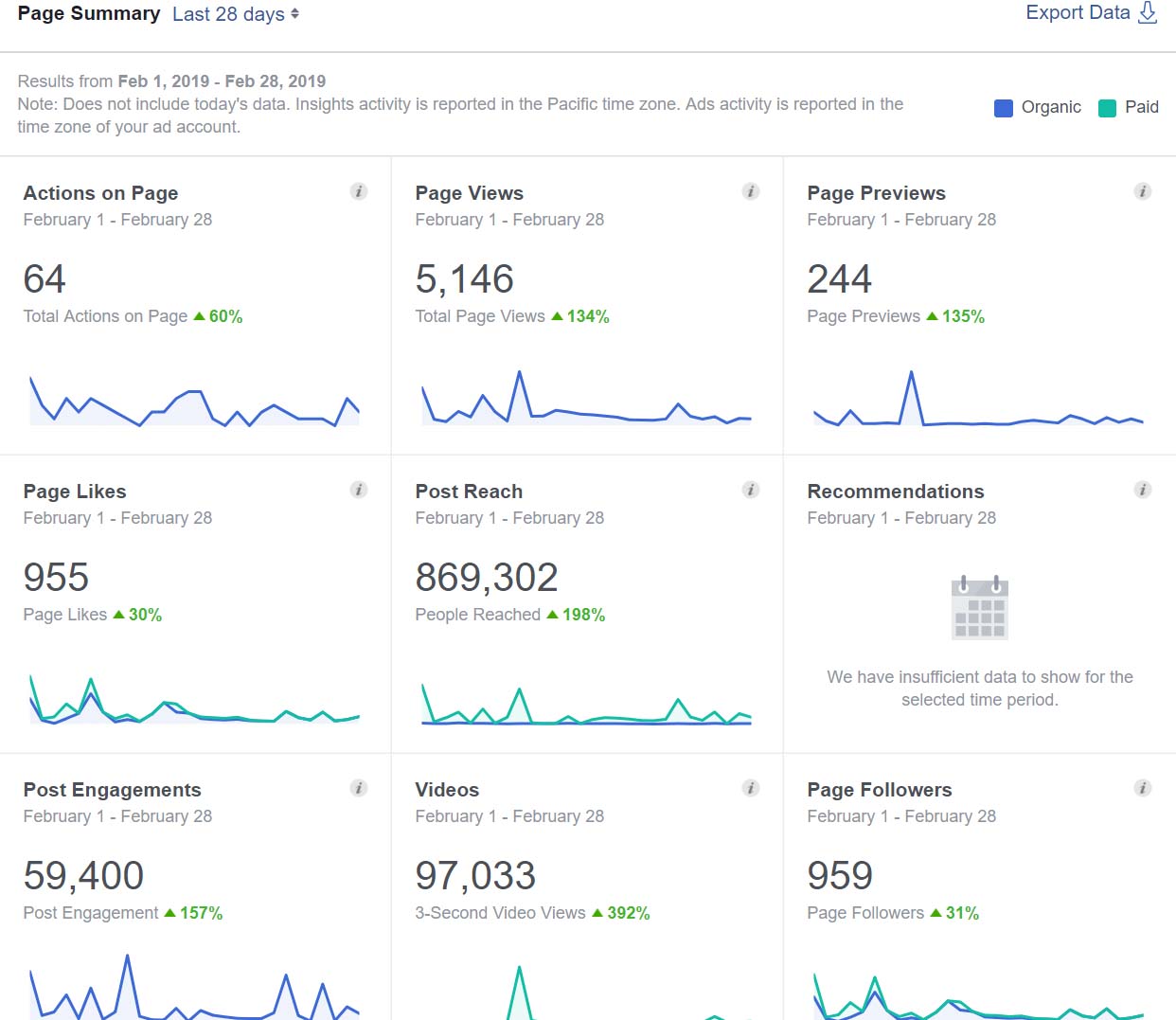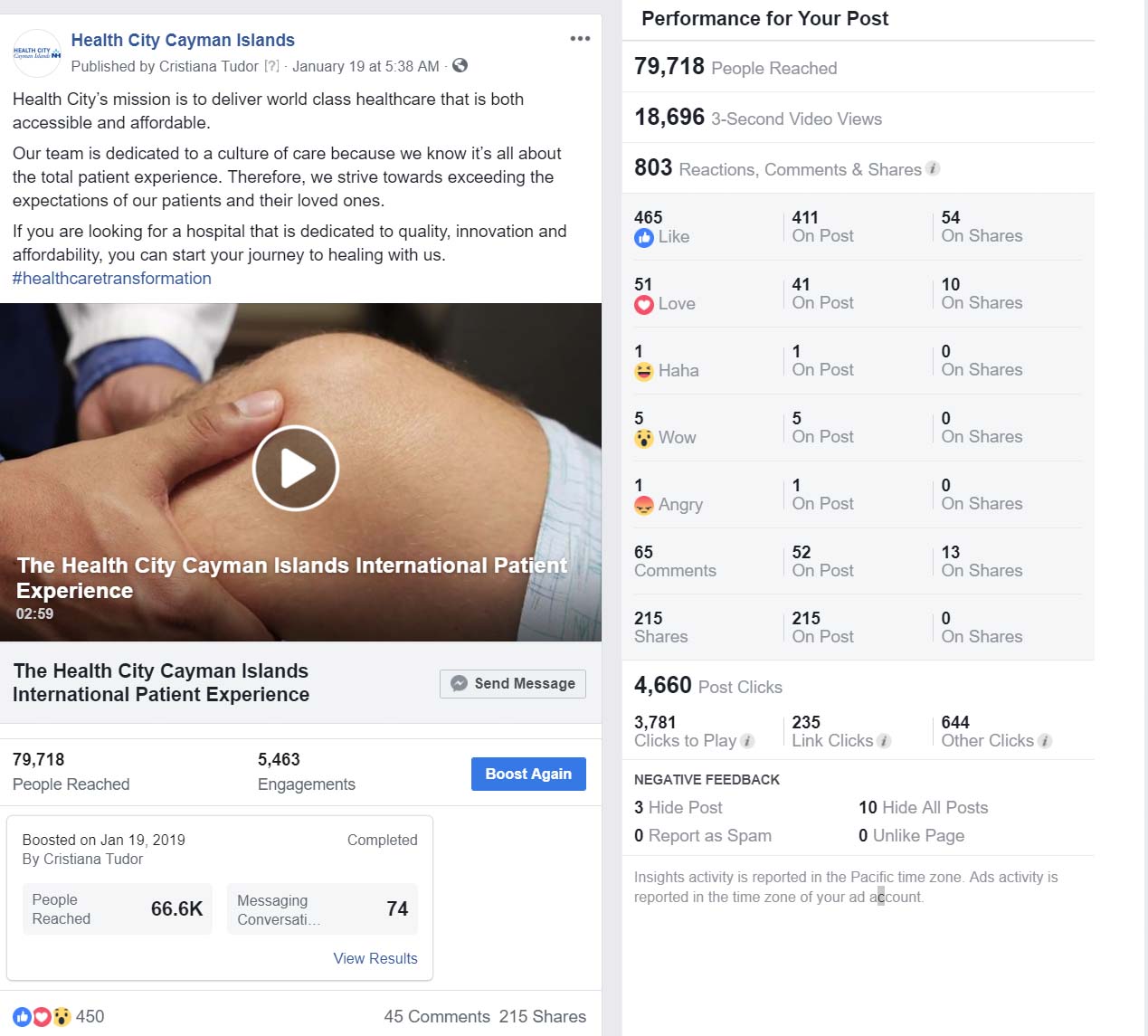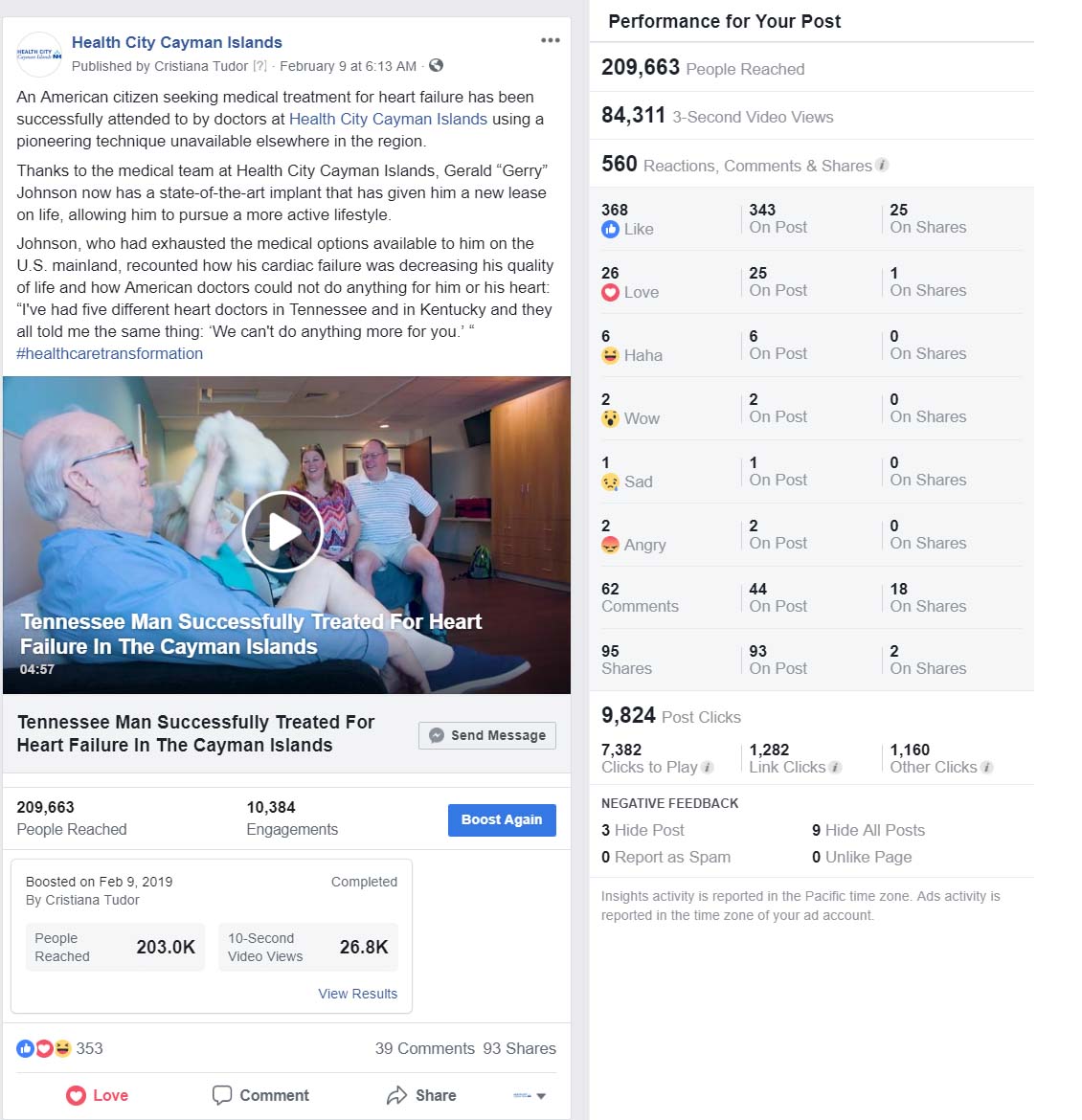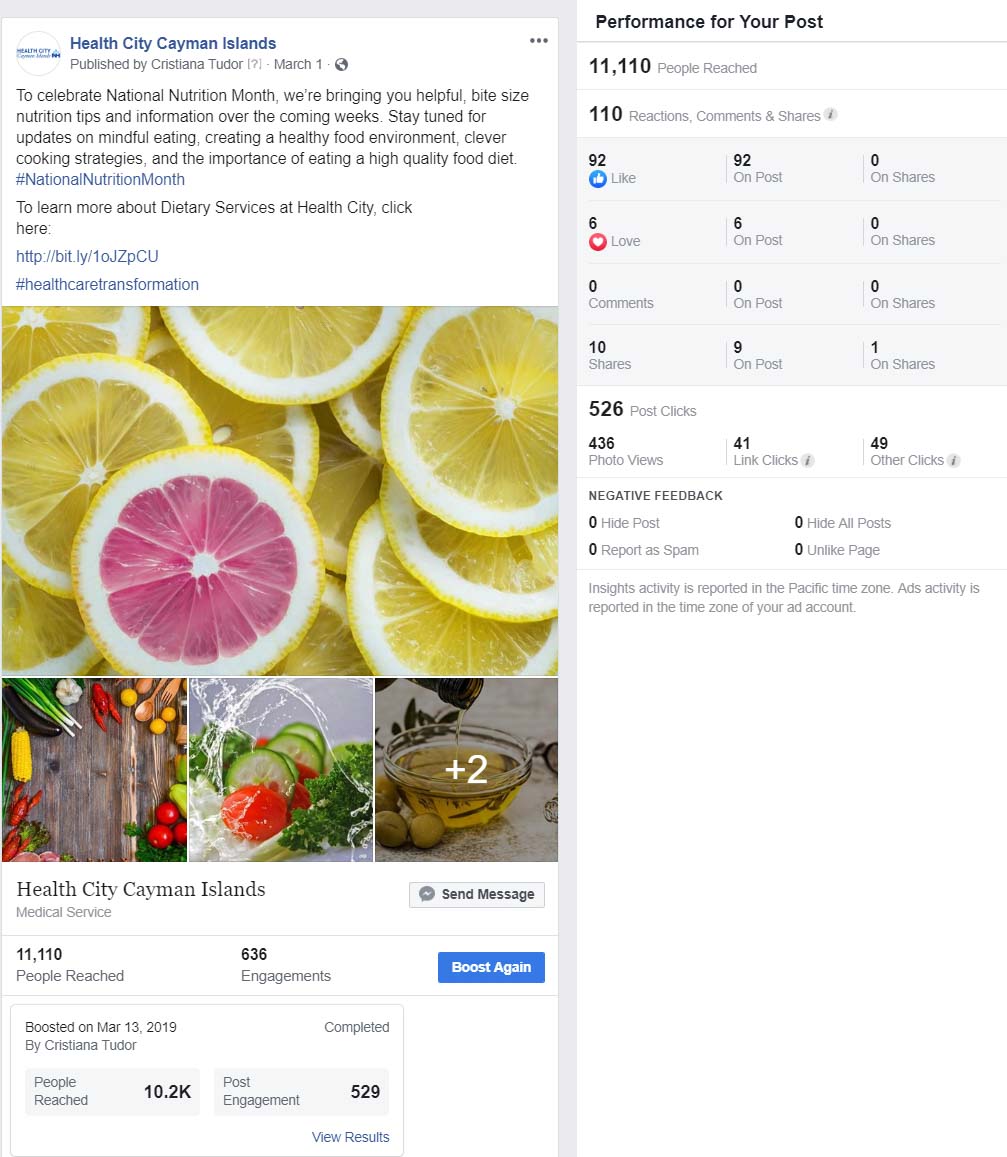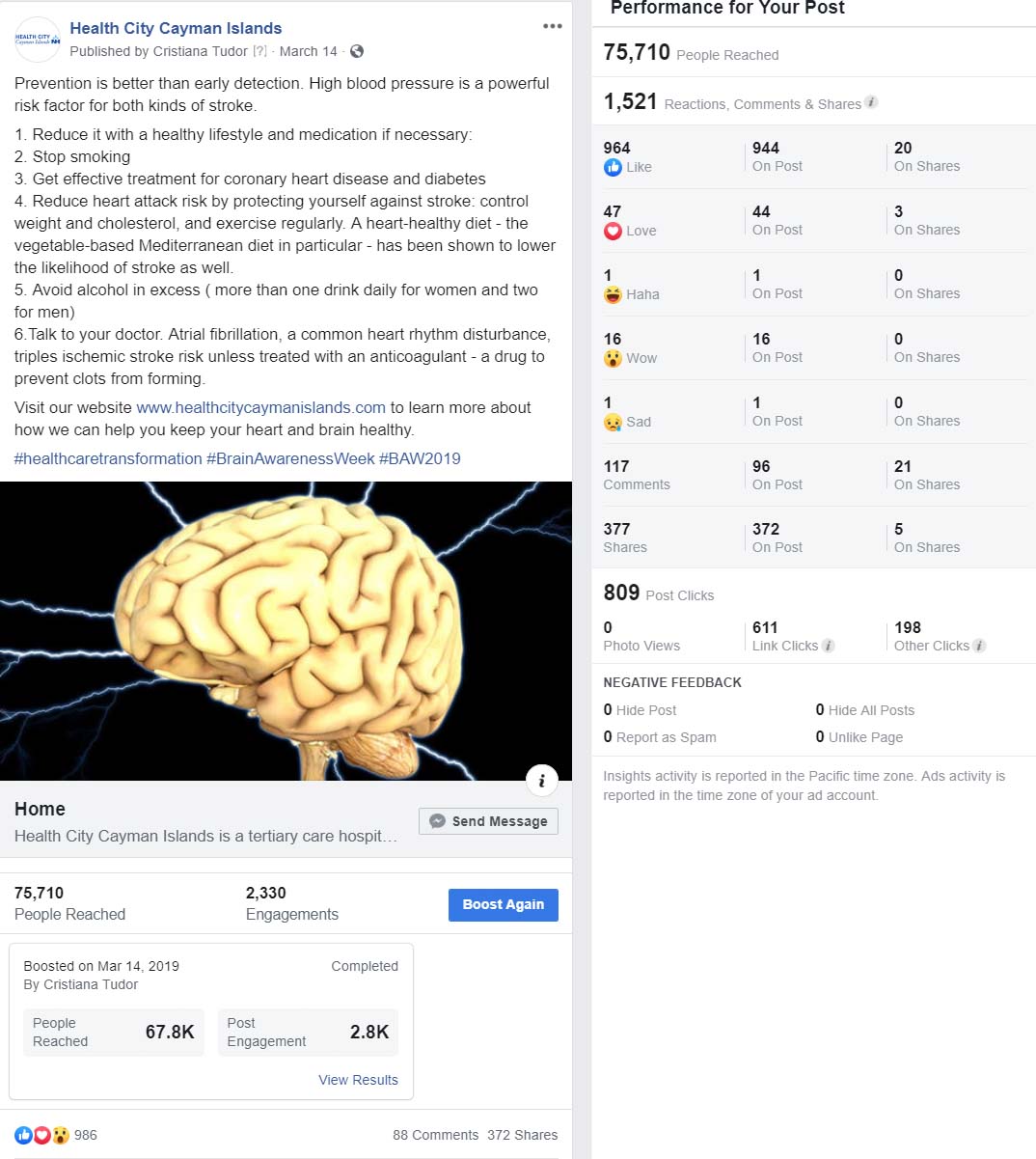Of course, we don’t play favorites when it comes to our clients – but a project we’re particularly passionate about involves the medically advanced tertiary hospital in the Caribbean, Health City Cayman Islands. We’ve been on the project since its inception in 2014 and are so proud to have been able to contribute to growing patient numbers and profit margins year over year. The vision of Dr. Devi Prasad Shetty, famously known as the Cardiologist of Mother Teresa (or Saint Teresa of Calcutta), Health City is based on the principle that a healthcare solution is not truly a solution if it is not affordable and widely available.
This new model of healthcare represents an intersection of two of our primary practice areas (i.e. ‘health and wellness’ and ‘travel and tourism’) and in this piece, we’re going to take a deep dive into some of the social campaigns we have been executing on their behalf over the last few months. Within this overview, we’re also going to call out some of the best practices for social marketing that we’ve employed along the way.
An Overview of Healthcare Marketing
Healthcare marketing integrates multi-channel, highly-segmented and targeted online and offline tactics that are designed to find and acquire new patients, engage with them through strategic outreach, and nurture them to create relationships throughout their entire healing journey.
Healthcare is changing; the industry used to be built on volume ( the higher the number of patients, the better), while now it is more focused on value – meaning that patient engagement, involvement, and ongoing health outcomes become key performance indicators. Considering that the healthcare landscape continues to shift the focus more on consumers, while patients become more involved with their own health/ healing process, providers and digital marketers need to adjust their engagement strategies with their target audience to make sure they remain relevant while generating revenue from new and former patients.
“Healthcare is changing; the industry used to be built on volume, while now it is more focused on value.”
Campaign Structure. Content Overview & Results Achieved
The idea behind the #healthcaretransformation movement was to mirror the principles outlined above. The philosophy was centered around the new data-driven healthcare delivery model, built from the ground up. This is delivered world-class specialists to health concierge services for you and your family who go above and beyond to ensure that your experience is efficient, economical, and exceptional in every way.
The content has been structured following a detailed outline considering national and international health and wellness observances. The message was built with the audience’s health needs in mind. Their response has been terrific, to say the least.
Each month had a theme. January was Neuroscience month and the content was centered around various movement disorders, explained how the brain works and how important spine is, since it is at the core of our overall health.
February was ‘Heart Month’. Considering that neuroscience goes hand in hand with cardiology, the social media content focused more on cardiology but had a strong emphasis on neuroscience. Not only was the content centered around various conditions with a higher incidence but it also provided education regarding prevention rather than early detection.
March was ‘National Nutrition Month’. Throughout the entire month, content was structured around mindful eating, creating a healthy food environment, clever cooking strategies, and the importance of eating a high quality food diet. On top of that, between March 11-17 ‘Brain Awareness Week’ was observed through educational posts around prevalent brain conditions and innovative prevention techniques.
It was vital for our audience to understand not just the diagnosis but how they can prevent various conditions or what kind of medical examinations are needed for early detection.
The Importance of Truly Knowing Your Audience
Since individuals are actively seeking and sharing health information via social media, it is of the utmost importance to know your audience very well, know their habits, their interests, the prevalent and the incidence of various conditions, and apply this knowledge accordingly by developing content that is both meaningful to your target and that generates a solid return on investment (ROI).
Wrapping it Up
Social media content is more important than ever. The content needs to be outlined considering the monthly and yearly goals, topics that are social media friendly and that are relevant to your audience, rather than posting whatever sounds good. On top of that, having an approach that is too sales driven may hurt your overall brand strategy, as well.
A successful campaign or message should focus on providing value to your audience, demonstrate meaning, purpose, and serving your audience in a unique way, different from competitors. To do so successfully, providers and social media strategists and content creators need to understand their audience very well, beginning with their needs, interests, and ending up with behavior.
Being flexible, adjusting your content, and overall practice processes to serve your audience (prospective patients and patients) efficiently, effectively (from a quantity and quality perspective) are cornerstone elements.
This whole funnel reminds me of the classic questions I was taught during my Journalism undergraduate classes:
- What?
- Who?
- When?
- How?
- Why?
- Where?
Having a clear answer to these questions definitely helps streamline the content creation flow, as well as the practice processes to make patient experiences positive all while engaging in a creative way with your audience.



